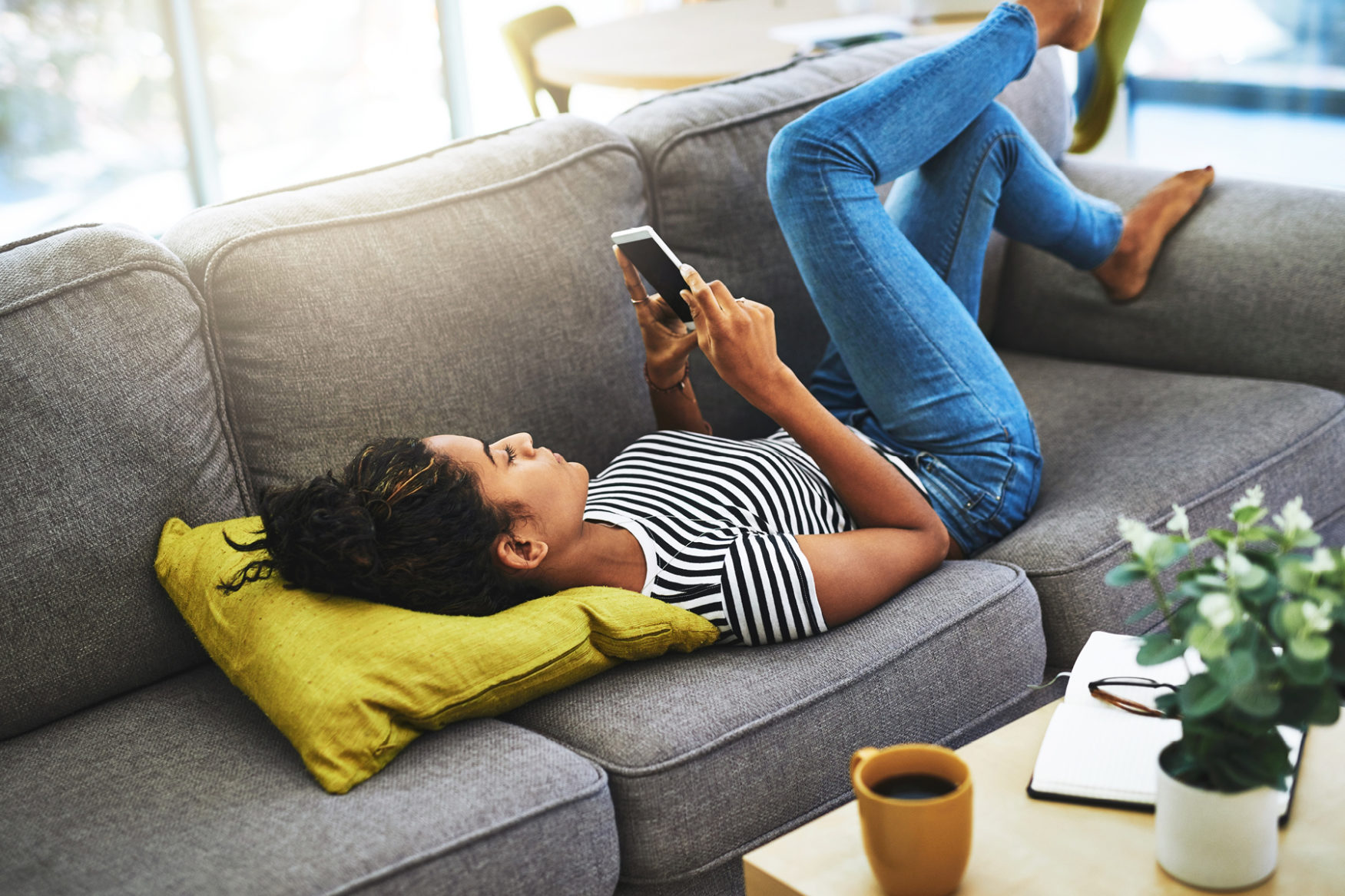A photo filter might make us feel glamourous in the moment, but are these digital enhancements good for our body image? We share some tips to design a social feed that makes you feel great.
In the past magazines were blamed for sharing unattainable images of photoshopped models, but now anyone with a smartphone can airbrush their images and share them online. These airbrushing apps or filters are designed to correct any perceived imperfections to put your best digital foot forward. But how do these images make us feel about ourselves?
The impact of filters on self-esteem
Multiple studies have shown social media posts can set unrealistic expectations which may lead to feelings of inadequacy and low self-esteem. Research shows young women negatively compare their appearance to others online.
A 2017 survey of almost 1,500 teens and young adults found photo-sharing platform Instagram was the most damaging social media site for mental health, body image and wellbeing.
As one survey respondent put it: “Instagram easily makes girls and women feel as if their bodies aren’t good enough as people add filters and edit their pictures in order for them to look ‘perfect’.”
A new survey by UK charity Girlguiding found half of girls and young women (aged 11-21) surveyed regularly use apps or filters to look better online. And 39% said they felt upset that they couldn’t replicate their online appearance in real life.
In extreme cases, plastic surgeons have reported cases of patients asking for surgery to help them look like the filtered image of themselves. A trend dubbed ‘Snapchat Dysmorphia’. Kids Helpline’s Tony FitzGerald says young people regularly call the service with concerns about self-esteem, self-worth and body image because of images they see on social media.
“They see images online and they try to emulate what they see, but no one can achieve that level of perfection because many of the images are fake or have been manipulated, or have been staged in a way that is not necessary”, says FitzGerald.
“I think it’s reasonable to say that Instagram is the primary platform where those images are accessed by young people,” he says. “We’re all aware of the power of the Instagram influencer and the huge following that they have – so that impact can be quite profound.”
Take control of your feed
The good news is you are in control of everything you consume on social media. With the touch of your screen you can unfollow pages and profiles that don’t make you feel good. FitzGerald says young people should be encouraged to think critically about what pops up in their social feed. “Knowing that what they’re looking at is not necessarily real, as most of these glamorised images have been manipulated in some way, shape or form,” he says. “And even if it is real, these people have likely been heavily made up and the image ‘staged’.”
“In normal life, when they’re not in front of a camera, it’s very likely that these people we see online are just like you and I,” says FitzGerald. “When you look around you at your family and friends it’s very likely that none of them are like the images you see online.”
Follow people who make you feel great
FitzGerald says young people are becoming a lot more discerning and sceptical about what they see online. Campaigns like the #filterdrop challenge, encourage people to embrace their imperfections and post real life images on social media.
The idea, started by UK make-up artist and curve model Sasha Pallari, is to fill peoples feeds with more realistic images. “Movements like this, which encourage more reality and less fakery, are a really positive thing,” says FitzGerald. “It’s so important to follow real people who make you feel great, instead of images and influencers that really are completely unattainable in terms of looks.”
“Try to follow other people online who have a much healthier and more normal aspect of life,” he says.
FitzGerald says put simply it’s about being in touch with your feelings and seeking out things that make you feel good. “If you’re following certain pages or content online and you’re having a negative reaction to it then that might be a bit of a trigger to think: do I really need to follow that if it’s making me feel bad? What’s the worth of it?”
Building a positive body image
You don’t have to have flawless skin, sculpted abs or long legs to have a positive body image. Kids Helpline says it’s about how you feel about the way you look. Instead of comparing ourselves to unattainable images online, FitzGerald suggests focusing on the positives about our bodies and our own lives. “It’s about trying to flip that thinking and say: but I’m unique and there are positive aspects about me as a person, my own body and personality,” he says. “We need to catch those thoughts that are telling us negative things about our bodies and replace them with positive ones.”
Tips to boost your body image
• Do things that make you feel great
• Spend time with positive people
• Write a list of your positive qualities and read it often
• Love and respect your body for all it can do
• Embrace the things that make you unique
• Don’t compare yourself to others
• Know you are more than what you look like
• Try to catch negative thoughts and replace them with positive ones
References
*pubmed.ncbi.nlm.nih.gov/25462886/
*rsph.org.uk/about-us/news/instagram-ranked-worst-for-young-people-s-mental-health.html
*girlguiding.org.uk/what-we-do/our-stories-and-news/news/girls–fear-criticism-for-being-themselves/
This article was kindly supplied by Tracy McBeth via BUPA HealthLink.
